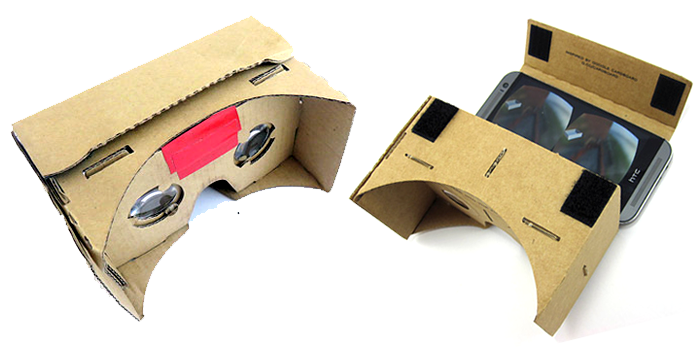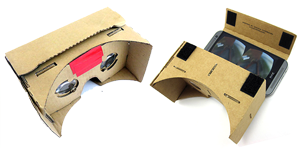Experimenting with Virtual Reality Science
With an inexpensive cardboard viewer and a few phone apps, students can explore the creation and effectiveness of virtual reality content. How does it work, how difficult is it to make, and how do people respond to this kind of content? Science Buddies has multiple science and engineering project ideas to help students put these questions to the test.

Virtual Reality has been a staple in science fiction books and movies for years, but Virtual Reality technology has been relatively slow to reach the mainstream public. Hallmarks of VR development and evolution over the last 25 years include Sega's introduction of VR technology for arcade games in 1991 and the first prototype of Oculus VR technology in 2010. Companies like Valve (Steam), Sony, OnePlus, Samsung, and Oculus VR (acquired by Facebook) are all working with VR technology. Creating immersive content, viewers, and headsets that will make people really believe they are in another environment is a complicated process!
While high-end VR headsets and systems are still expensive and out of reach for many, viewing solutions like Google Cardboard, which debuted in 2014, let people get a taste of VR using their cellphones. Pop a cellphone into a cardboard headset, and you can explore a 360° photo (also called a photo sphere). Because each of our eyes sees a scene slightly different (e.g, from a different angle), VR phone apps like the ones used with Google Cardboard use slightly different images for each eye. Together, these images create a stereoscopic view that gives the VR depth and lets you, as the viewer, feel like you can look around and explore a VR space.
Making Student Connections
Headsets like Google Cardboard are making Virtual Reality content more and more accessible, and the widespread availability of cardboard viewers makes it possible for students interested in gaming or entertainment to experiment with the science and engineering behind VR.
VR technology is still so new that students can get involved with fun projects that let them explore real questions related to VR technology, content creation, user adoption, and hardware development. Whether students experiment with the design of headsets (either modifying existing models or prototyping their own), test VR content creation tools, or explore aspects of human psychology that play into successful VR, this is an exciting space for student science.
Students interested in VR may enjoy projects like these:
- Do People Prefer Virtual Reality Headsets over 2D Pictures?*: In this human behavior project, students get hands on creating and testing VR content. Using a cellphone camera and cellphone apps, students create a photo sphere of a location and also create a series of individual photos of the same location. They then do user testing with volunteers to see how people respond to a series of photos compared to 360° VR content. Which will people like better and why? The feedback students get, and the data they collect, might surprise them, but the process of creating their 360° scenes will also be a lot of fun!
- Create and View Your Own 3D Models in Virtual Reality *: This abbreviated project idea challenges students in VR content creation to move beyond 360° photos and experiment with CAD software to create Virtual Reality content.
- Design Your Own Virtual Reality Headset *: This project challenges students to design a cardboard headset from scratch or modify an existing headset to see if they can improve upon the design. Following the Engineering Design Process, students are encouraged to brainstorm, design, prototype, test, and then make changes and do additional testing based on user feedback.
- For additional student project ideas related to VR, see the special Virtual Reality interest area.
Tie in Science Reading
Encourage your students to do additional research by requiring science reading. The following articles from the Science Buddies News Feed are related to Virtual Reality and the kinds of questions students might want to consider when doing a project in this area. Click through to see the reading level for each article, and use the "Create Assignment" button to add an article to Google Classroom:
- Virtual reality raises real risk of motion sickness
- Virtual reality: Hybrid Virtual Environment 3-D comes to the cinema
- Putting the McGurk Effect to the Test
To learn more about our Google Classroom Integration tools, see or visit the Google Classroom Integration page .
Thanks to support from the Best Buy Foundation, Science Buddies is developing resources to support student exploration of science and technology related to Virtual Reality.
Categories:
You Might Also Enjoy These Related Posts:
- Plastics and Earth Day - Science Projects
- Arduino Science Projects and Physical Computing
- 10+ Robotics Projects with the BlueBot Kit
- 5 STEM Activities with Marshmallow Peeps
- March Madness Basketball Science Projects: Sports Science Experiments
- Women in STEM! More than 60 Scientists and Engineers for Women's History Month
- Explore Artificial Intelligence and Machine Learning with Student AI Projects
- 10 Reasons to Do the Rubber Band Car Engineering Challenge










